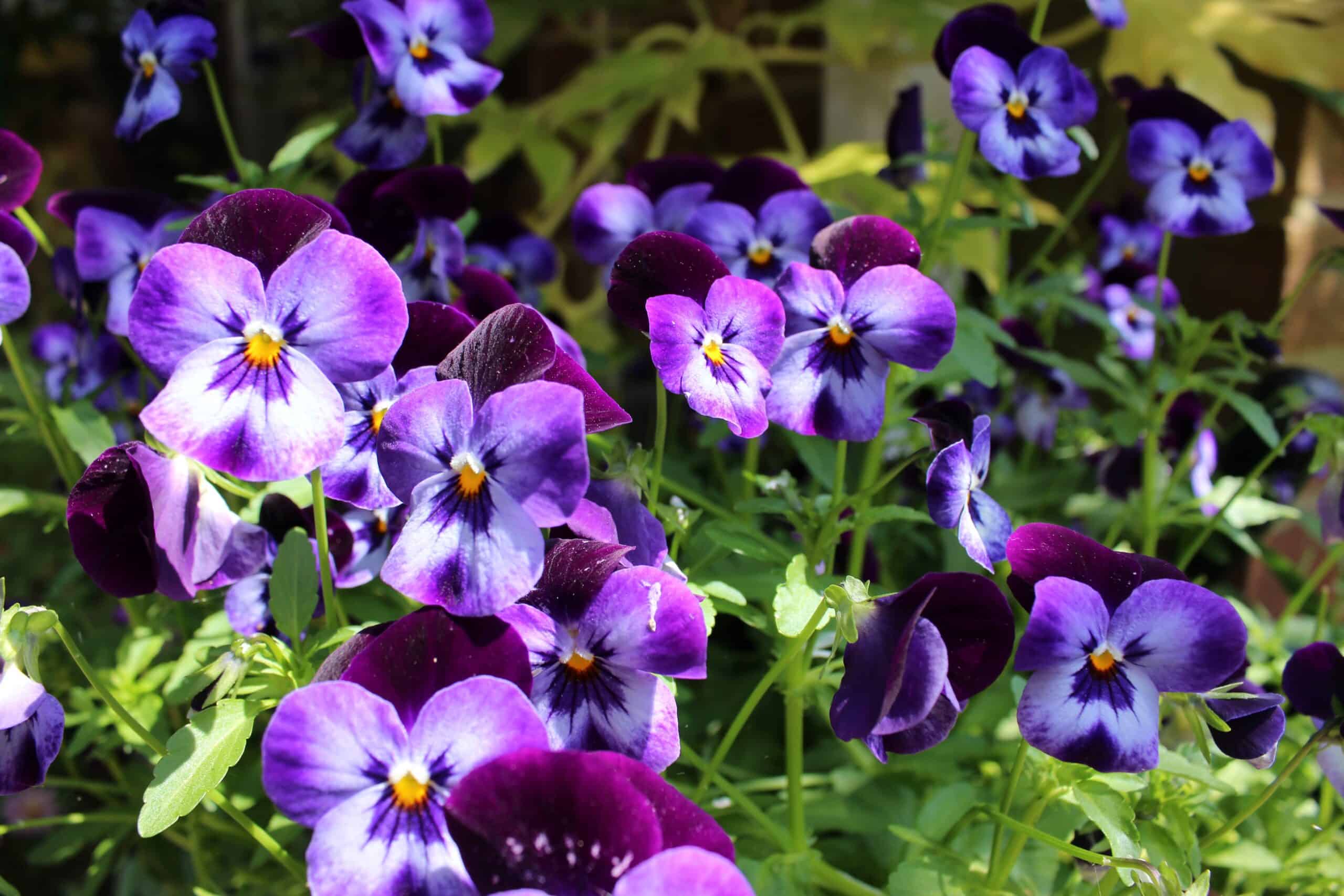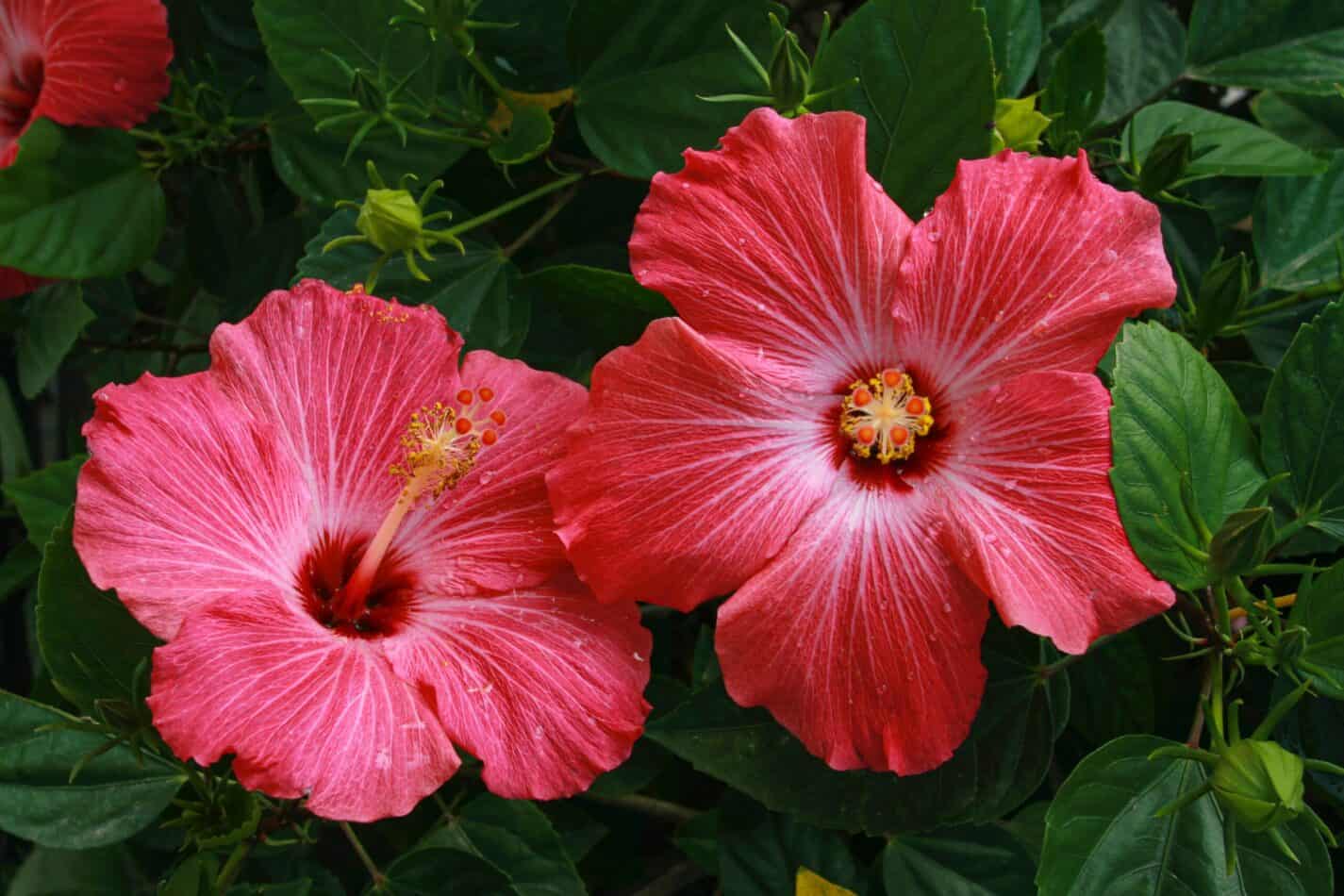Pansies are a beloved flower known for their vibrant colors and cheerful faces. These hardy flowers are easy to grow and make a great addition to any garden, whether you’re an experienced gardener or just starting out. With a little bit of care and attention, you can grow pansies that will bloom all season long. In this article, we will go over the basics of growing pansies and provide tips and tricks to help you achieve success in your gardening endeavors.
 Why Should You Plant Pansies?
Why Should You Plant Pansies?
There are several reasons why you might consider growing pansies in your garden:
- Beautiful colors and patterns: Pansies come in a wide range of colors and patterns, from solid shades of purple, yellow, orange, blue, and red, to bicolor and tricolor combinations. Their delicate, velvety petals and bright faces make them a popular choice for adding color and texture to garden beds, borders, and containers.
- Easy to grow: Pansies are relatively easy to grow and care for, making them a great choice for novice gardeners or those who want a low-maintenance addition to their garden. They prefer cool weather and can be planted in the spring or fall, and they typically bloom for several weeks or even months.
- Versatile: Pansies are versatile plants that can be grown in a variety of settings, including flower beds, borders, window boxes, and hanging baskets. They also make great companion plants for other flowers and vegetables.
- Attract beneficial insects: Pansies can attract beneficial insects to your garden, such as bees, butterflies, and hoverflies, which can help to pollinate your plants and control pests.
- Edible flowers: Pansies are edible, and their flowers can be used to add color and flavor to salads, desserts, and other dishes. They are also rich in vitamin C and antioxidants, making them a healthy addition to your diet.
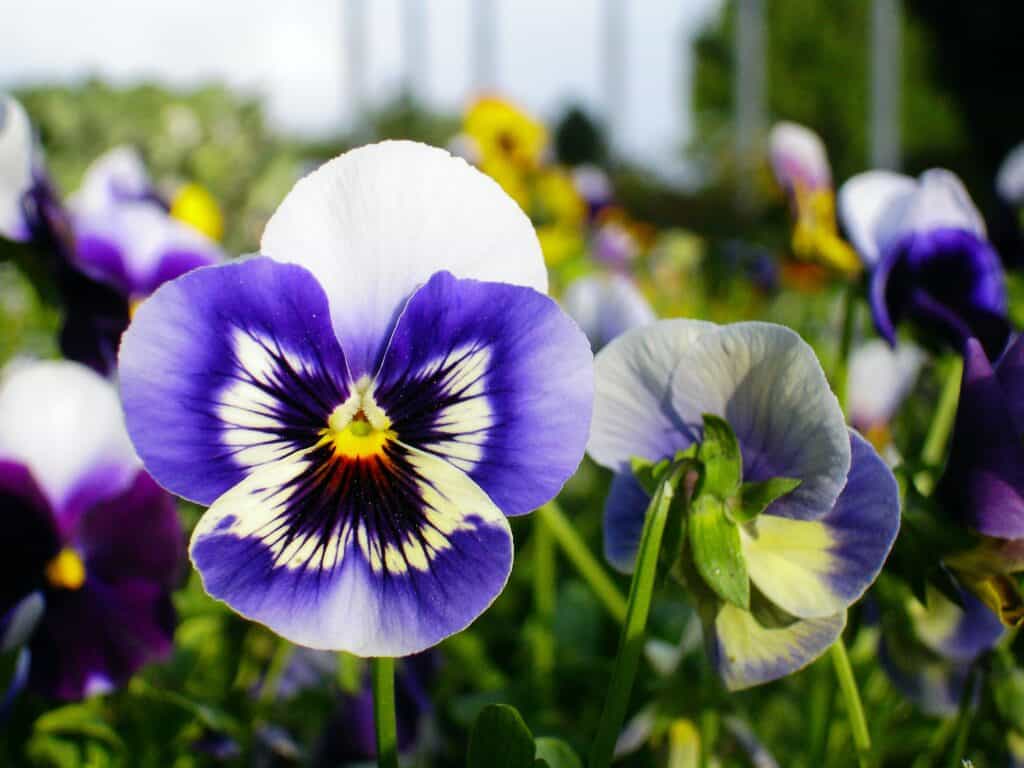 How to Grow Pansies
How to Grow Pansies
The first step to growing pansies is to choose the right location. Pansies thrive in cool temperatures, so it’s best to plant them in the fall or early spring when the weather is cooler. They prefer partial shade to full sun, so choose a spot that gets some morning sun but is protected from the hottest afternoon sun. They also prefer well-draining soil with a neutral pH, so it’s best to amend the soil with compost or other organic matter before planting.
Timing
When it comes to planting pansies, timing is crucial. If you’re planting in the fall, the best time to do so is six to eight weeks before the first frost of the season. This will give the flowers time to establish roots and grow before the temperatures drop too low. If you’re planting in the spring, wait until the last frost has passed and the soil has warmed up to at least 40 degrees Fahrenheit.
Spacing
When planting your pansies, be sure to space them about 6 inches apart to give them room to grow and spread out. If you’re planting them in a container, be sure to use a good quality potting soil and provide drainage holes to prevent water from becoming stagnant.
Watering
Once your pansies are planted, it’s important to give them the proper care to keep them healthy and blooming all season long. Pansies require regular watering, but it’s important to not over-water them, as they are susceptible to root rot. They should be watered thoroughly, but only when the soil is dry to the touch. If you’re growing pansies in a container, be sure to check the soil moisture level daily and water as needed.
Fertilizer
Pansies also need regular fertilization to keep them healthy and blooming. Use a balanced, slow-release fertilizer every 4-6 weeks, or a liquid fertilizer every 2-3 weeks. Avoid using high-nitrogen fertilizers, as they can cause the plants to produce too much foliage at the expense of the blooms.
Deadheading
One of the most important things you can do for your pansies is to deadhead them regularly. Deadheading is the process of removing spent flowers from the plant. This encourages the pansies to produce more blooms and can also help to prevent disease and pests from taking hold. To deadhead pansies, simply snap or cut off the spent flowers as soon as they start to fade.
Pests and Diseases
Pansies are also susceptible to a variety of pests and diseases, including aphids, slugs, and mildew. To prevent pests and diseases, be sure to keep your pansies well-watered and fertilized, and be sure to remove any dead or diseased leaves or flowers as soon as they appear. If you notice any pests, you can use a mixture of water and dish soap to spray them away.
Temperature
Lastly, be sure to protect your pansies from extreme temperatures, especially if you’re planting in the fall. A light mulch layer can help to insulate the soil and keep the roots warm during the colder months. You can also use frost covers or row covers to protect your pansies from frost and freeze damage.
Pansies are a beautiful and hardy flower that can add a splash of color to any garden. With the right location, timing, and care, you can grow healthy and blooming pansies that will last all season long. Remember to choose a spot with partial shade, amend the soil with compost or organic matter, space them properly, water them regularly, fertilize them, deadhead them regularly, protect them from pests and diseases, and provide them frost protection. With a little bit of care and attention, you can enjoy the beauty of pansies in your garden for many seasons to come.
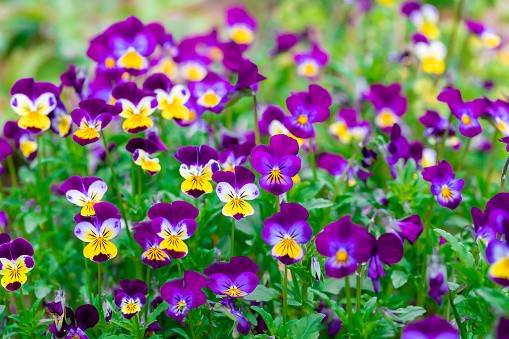
Type of Pansies
Pansies are a popular and beloved flower known for their vibrant colors and cheerful “faces.” These flowers come in a wide variety of colors, patterns, and sizes, making them a versatile choice for any garden. Here are some of the most common types of pansies:
- Viola x wittrockiana: This is the most common type of pansy, known for its large flowers that can reach up to 2.5 inches in diameter. They come in a wide range of colors, including yellow, blue, purple, red, and white.
- Viola cornuta: Also known as horned violet, this type of pansy has smaller flowers that are typically around 1 inch in diameter. They come in a wide range of colors, including blue, purple, red, white, and yellow.
- Viola tricolor: This type of pansy is also known as Johnny-jump-ups, wild pansies, and hearts ease. They have smaller flowers that are typically around 0.5 inches in diameter. They come in a wide range of colors, including yellow, blue, purple, red, and white.
- Miniature pansies: As their name suggests, these are smaller types of pansies that are perfect for rock gardens, borders or small gardens. They come in a wide range of colors and sizes, and often used in pots or indoor arrangements.
- Clear Violet Pansies: These pansies are known for their rich deep purple color and their velvety petals. They are very hardy and are perfect for borders and as a bedding plants.
- Yellow Pansies: These pansies have a bright yellow color that makes them perfect for adding a touch of cheer to any garden. They often used as a cheerful addition to any garden, and are also good for indoor arrangements.
- Giant Pansies: These pansies are larger than most varieties, and they can reach up to 5 inches in diameter. They come in a wide range of colors and are often used in beds and borders or as cut flowers.
- Pendent Pansies: These pansies have flowers that hang down and often used in hanging baskets or as a trailing plant in container gardens. They come in a variety of colors, including yellow, orange, blue, purple and red.
In addition to the types listed above, there are also many hybrid varieties of pansies that have been developed in recent years, such as the “Matrix” series, the “Cool Wave” series, and the “Delta” series. These hybrids are known for their unique colors and patterns, and they offer a wide range of options for gardeners looking to add some variety to their gardens.
 Potting and repotting
Potting and repotting
Growing pansies in pots or containers can be a great way to add color and beauty to your garden or patio. However, proper potting and repotting techniques are crucial to the health and survival of your pansies. Here are some tips and guidelines for potting and repotting pansies in containers:
- Potting: When potting pansies, choose a container that is at least 6 inches deep and has drainage holes to allow excess water to escape. Fill the container with a high-quality, well-draining potting mix, and make sure the soil is moist but not waterlogged. Space the pansy plants about 6 inches apart, and gently firm the soil around the base of each plant. Water the plants thoroughly after planting.
- Repotting: Pansies may need to be repotted if they become overcrowded or if the soil in the container becomes too compacted. When repotting pansies, gently remove the plants from their old container and shake off any excess soil. Carefully inspect the roots and trim away any that are brown or damaged. Then, place the plants in a new container that is one size larger, and fill it with fresh, well-draining potting mix. Water the plants thoroughly after repotting.
- Watering and fertilizing: Pansies in containers will require regular watering, as the potting mix will dry out more quickly than garden soil. Check the soil moisture level daily, and water as needed to keep the soil consistently moist but not waterlogged. Additionally, you will need to fertilize container pansies more frequently than those planted in the ground. Use a balanced, slow-release fertilizer every 4-6 weeks, or a liquid fertilizer every 2-3 weeks to ensure proper nutrition for your pansies.
- Sunlight and temperature: Pansies prefer cooler temperatures, so they should be placed in a location that is protected from the hottest afternoon sun. They should also be placed in a location that gets some morning sun. Avoid placing them in a location that gets too much direct sunlight.
- Deadheading: Deadheading, or removing spent flowers, is important for pansies grown in containers as it promotes the production of more blooms and can prevent pests and diseases from taking hold.
By following these tips and guidelines, you can successfully pot or repot pansies in containers, and enjoy their vibrant colors and cheerful faces all season long. It’s a good idea to check on your container pansies regularly, and adjust watering, fertilizing and placement according to the weather and temperature changes.
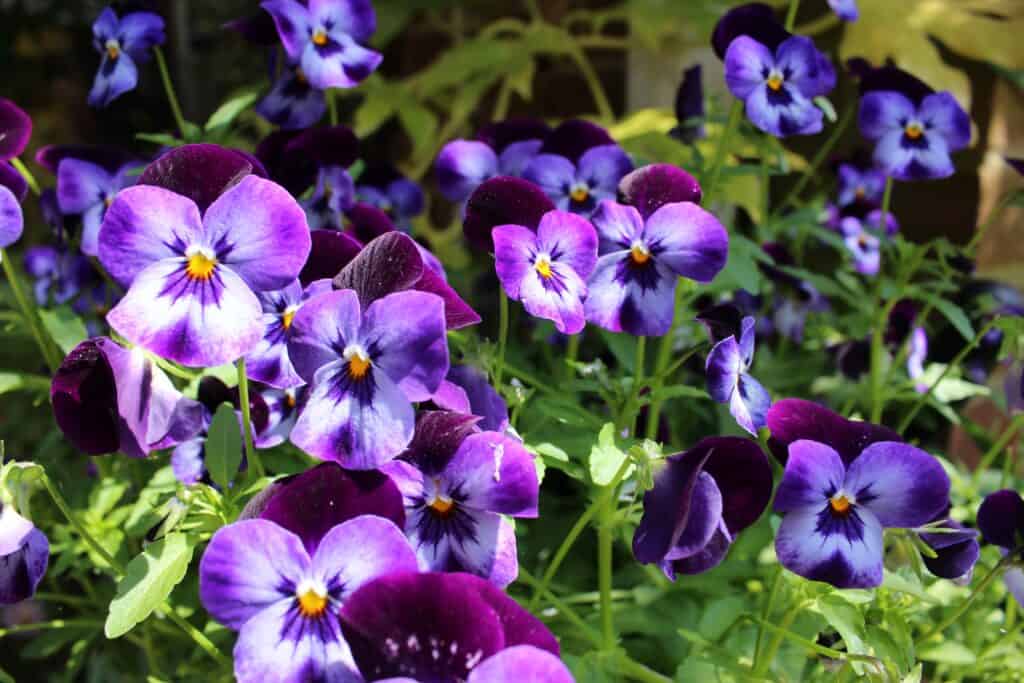
In conclusion, pansies are a versatile and colorful flower that come in a wide variety of types and varieties. Whether you’re looking for large or small flowers, a specific color, or a unique pattern, there is a type of pansy that will suit your needs. By choosing the right variety for your garden and giving it the proper care, you can enjoy the beauty and cheer of pansies for many seasons to come.
What we love from Amazon this week
Buy these wonderful flowers directly from Amazon:


